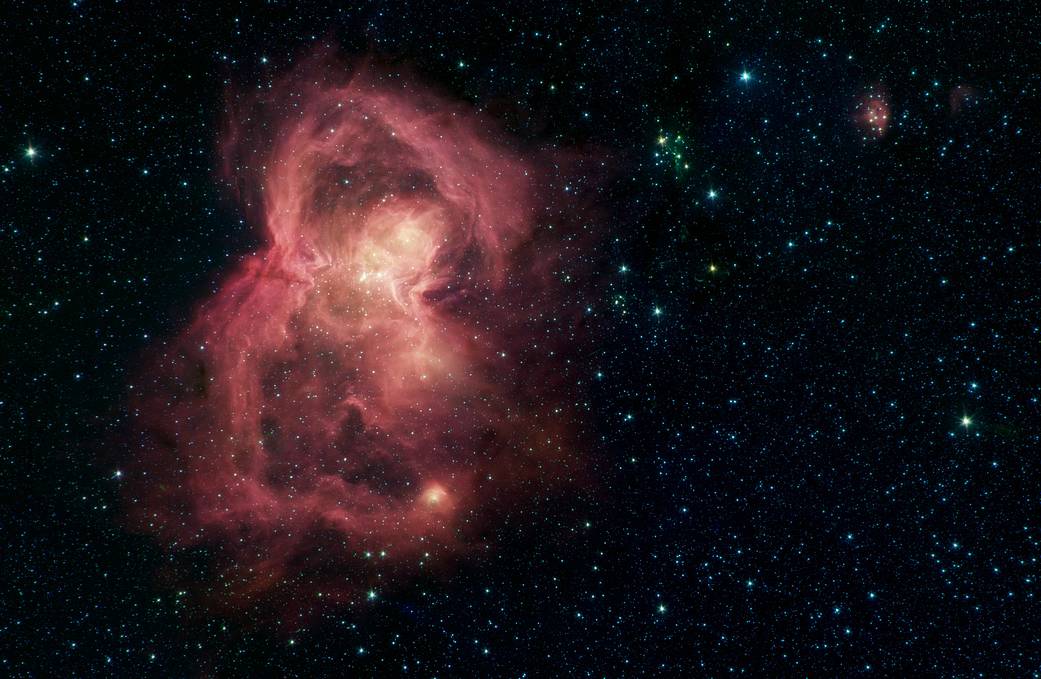太空蝴蝶
What looks like a red butterfly in space is in reality a nursery for hundreds of baby stars, revealed in this infrared image from NASA’s Spitzer Space Telescope. Officially named W40, the butterfly is a nebula – a giant cloud of gas and dust in space where new stars may form. The butterfly’s “wings” are giant bubbles of hot, interstellar gas blowing from the hottest, most massive stars in this region.
The material that forms W40’s wings was ejected from a dense cluster of stars that lies between the wings in the image. The hottest, most massive of these stars, W40 IRS 1a, lies near the center of the star cluster.
W40 is about 1,400 light-years from the Sun, about the same distance as the well-known Orion nebula, although the two are almost 180 degrees apart in the sky.
Image Credit: NASA/JPL-Caltech
What looks like a red butterfly in space is in reality a nursery for hundreds of baby stars, revealed in this infrared image from NASA’s Spitzer Space Telescope. Officially named W40, the butterfly is a nebula – a giant cloud of gas and dust in space where new stars may form. The butterfly’s “wings” are giant bubbles of hot, interstellar gas blowing from the hottest, most massive stars in this region.
The material that forms W40’s wings was ejected from a dense cluster of stars that lies between the wings in the image. The hottest, most massive of these stars, W40 IRS 1a, lies near the center of the star cluster.
W40 is about 1,400 light-years from the Sun, about the same distance as the well-known Orion nebula, although the two are almost 180 degrees apart in the sky.
Image Credit: NASA/JPL-Caltech
这张由NASA斯皮策太空望远镜拍摄的红外图像显示,在太空中看起来像一只红蝴蝶的东西,实际上是数百颗幼星的温床。这个蝴蝶星云的官方名称是W40,它是一个由气体和尘埃组成的巨大星云,在那里可能会形成新的恒星。蝴蝶的“翅膀”是由炽热的星际气体组成的巨大气泡,这些气体来自该地区最热、质量最大的恒星。
形成W40翅膀的物质是从图像中翅膀之间的密集星团中喷射出来的。这些恒星中最热、质量最大的是W40 IRS 1a,位于星团中心附近。
W40距离太阳大约1400光年,与众所周知的猎户座星云的距离差不多,尽管两者在天空中几乎相距180度。
图片来源:NASA/JPL-Caltech

